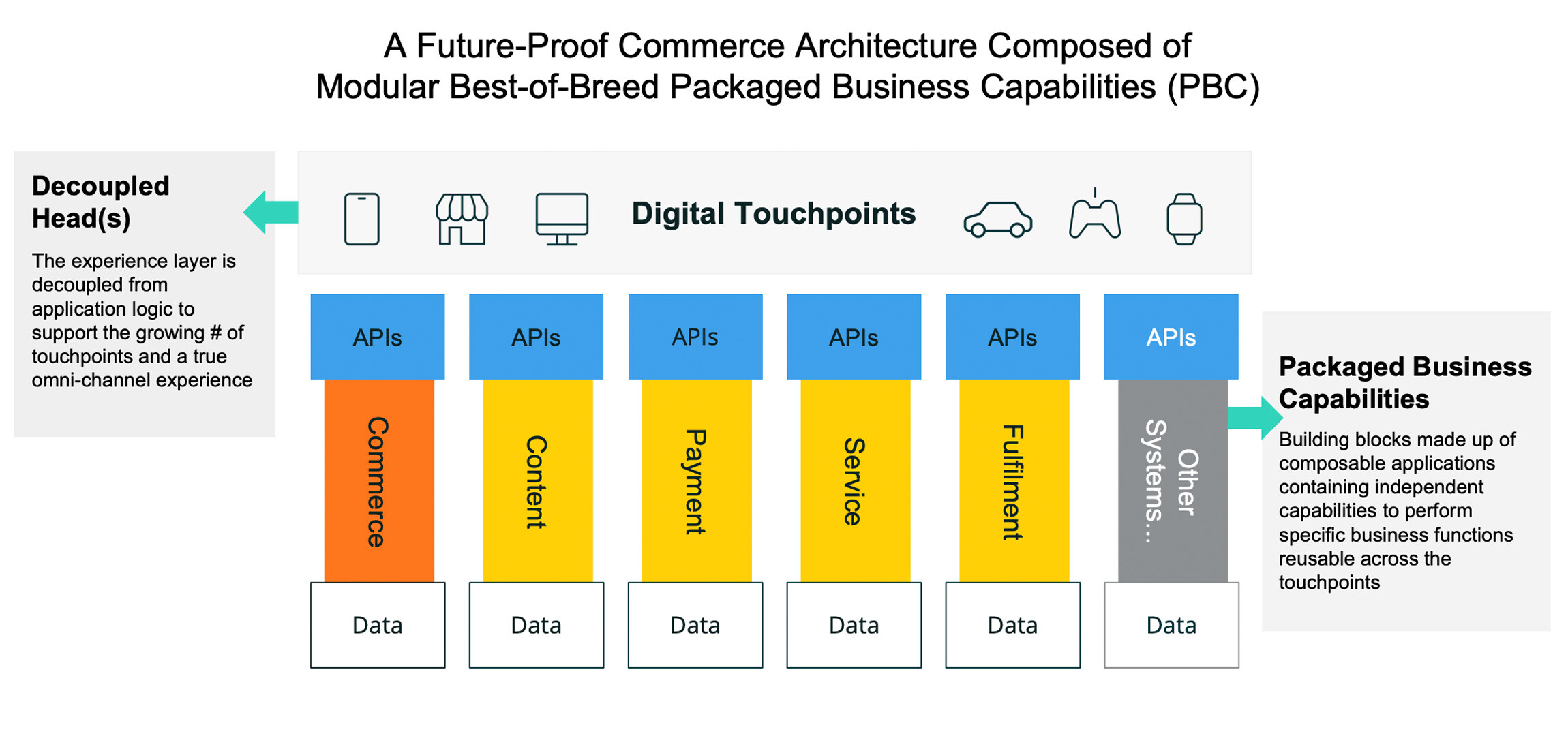
For the most part, when COVID-19 put the world in a tailspin three years ago, the majority of consumer-driven businesses already had an eCommerce business up and running. While not every site may have been up to speed with the major players in the market, at least shoppers had the option of purchasing products online and having them magically appear at their doorstep.
Unfortunately, for B2B buyers, this wasn’t the case. In fact, it’s estimated that at the beginning of 2019, 60% of the leading B2B companies had either zero or limited eCommerce capabilities. But that statistic changed, and it changed fast. By early 2021, McKinsey & Company reported 53% of B2Bs had eCommerce in place. One year later, the number had climbed to 65%.
This rapid adoption of eCommerce in the B2B sector was the topic of “The Fast and the Furious: Racing Ahead for Success in B2B Commerce,” a webinar hosted by Digital Commerce 360.
It’s really about going from a stock model to one that delivers speed.
Senior Vice President of Market Research and B2B at Digital Commerce 360
Mark Brohan, Senior Vice President of Market Research and B2B at Digital Commerce 360, set the stage by establishing that the title choice was intentional. The objective, as he explained it, was to help B2B businesses recognize both how and why it’s critical to walk away from the outdated, monolithic platform they implemented to survive the pandemic and upgrade to a MACH™-driven composable commerce solution that can ensure their future success. “It’s really about going from a stock model to one that delivers speed.”
Composable commerce at a glance

Unfortunately, B2Bs without modern commerce technology in place can’t address all these complexities of the buying process. As a result, many are spinning in circles and not getting anywhere. Mark stressed the goal is for businesses to leave road marks behind them, cross the finish line and claim long-term customer success and more digital sales as the prize. “The race to win over bigger numbers of digital-first buyers and turn them into loyal online customers is being won hands down every time by organizations that have embraced speed and agility through a flexible technology, eCommerce and business strategy.”
To provide B2B companies with more insight on how to make the move to MACH-driven composable commerce solutions, Mark turned the webinar over to Michael Scholz, the VP of Product and Content Marketing at commercetools. Michael took the webinar’s title to the next level by connecting the underlying messages within one of the most successful movie franchises in history, “The Fast & Furious,” to tips he believes companies should consider as best practices on the road to digital transformation.
Here are five analogies worth considering:
1. The engine is the most important part
When you think about legacy platforms, what you’re doing is buying the stock model. No matter how many customized bells and whistles you add, it’s only going to go so fast. If you truly want speed, you have to replace the engine. It’s the only way you can win the race. When it comes to commerce technology, this means it can’t be stock. You need to find an engine built on MACH architecture — one that combines microservices, APIs, cloud-native and headless technologies to deliver an open, flexible environment so you can move quickly at all times, adapt whenever necessary and retain your position in the first place.

2. Always pop the hood and go for a test drive
Most people won’t buy a car without taking it for a spin, yet business leaders continually buy software right off the shelf without ever having their IT teams experiment with it. That’s not the way it should be. “When you look at different vendors, literally ask them to pop the hood,” suggested Michael. “Figure out if they meet the MACH principles. If you, as a manufacturer, distributor or reseller, cannot sign up for and immediately get access to a trial that you can play around with and maybe upload your product catalog in or create a promotion, it probably doesn’t meet the requirements.”
Michael feels the most important question B2Bs can ask themselves when looking for a new eCommerce solution is, “Is this platform going to make me future-ready?”

3. If you’re constantly drifting, it’s probably time for a new car
Sure, drifting enables you to maintain control when you are struggling to stay on track, but it’s not a sound long-term business strategy. However, Michael pointed out that choosing a composable commerce approach gives you the power to cruise through crises of any kind. “By seeking out best-of-breed vendors, you give yourself a higher chance of success — to really figure out what that means for your business, what that means for your suppliers, contractors, vendors, etc.”
4. When you put your differences aside, you end up with a better solution
The reality is, some auto parts manufacturers make great engines, others make the highest quality wheels and still others produce the #1 tail pipes. When you’re building a race car, you pick and choose best-in-class vendors to deliver to your specifications. Unfortunately, traditional “legacy” platform models reduce your options down to what is compatible with their technology. With MACH, SaaS vendors proactively embrace an agnostic approach — offering products that easily integrate with other vendors regardless of which programming language, channel(s), industry, business model or customer segment.
Your eCommerce solution shouldn’t even care how digitally mature you are as a company, said Michael. The point is, all MACH-based vendors embrace an agnostic approach, giving B2B companies the freedom to build one solution that allows them to do anything they want. “It really allows you to be quick and not worry. Our APIs don't care if they’re being called out of the manufacturing world, out of the healthcare world, the retail scenario or, frankly even, at what point in the customer journey.”
Whether it’s personalization, optimization, promotions, using video or voice search, as long as you choose MACH, you can compose whatever you want. “All these things are core to really gaining a competitive advantage."
5. Build a team you trust
With composable commerce, you don’t get a black box. You have to assemble an elite team of racers. That may seem daunting, but it’s important to remember there are system integrators, agencies and even non-profit organizations like The MACH Alliance that can help you put together a team to enhance your current eCommerce user experience and manage and maintain your solution so it’s always future ready. As Michael shared, “If you build everything the way it’s intended, everything can be replaced very easily without any sort of downtime. That’s really important and it’s how you innovate.
Ultimately, the underlying message that keeps the 10 movies in the The Fast & Furious franchise speeding forward is that life is always going to throw you curve balls, and the only way to survive is to keep control of the car. “Every time you think you regained your freedom, the next curve ball comes around,” explained Michael, pointing out this is no different from the reality of the business world today.

Spoiler alert: Composable will never crash
Basically, the secret to B2B success is the same as in a car race — stay in the driver’s seat and retain control of the vehicle. When you choose an engine that runs on a composable commerce solution, that’s not a problem. According to Michael, “It’s a future-proof way to manage your business. Whatever life throws at you, you can experience zero-risk changes. There's no backwards compatibility from a technical perspective; you're always up to speed because you're always on the latest release. You can disrupt the market without being disrupted yourself. You can own the customer experience. You don't have to make sure that your backend works with your front end because all of that is already taken care of.”
“Whether it's supply chain disruptions, inflation, recession or pandemic, whatever the next couple of weeks, months and maybe years bring to us, it’s an opportunity to build your tech stack in a flexible environment, future-proof your business and set yourself up for success. And once it’s built, you have a robust solution that scales very, very nicely, reducing operational costs and allowing you to regain your total cost of ownership.”
To further explore the current state of B2B commerce and find out more about where the industry is headed, download Pivotal trends and predictions in B2B commerce in 2024.